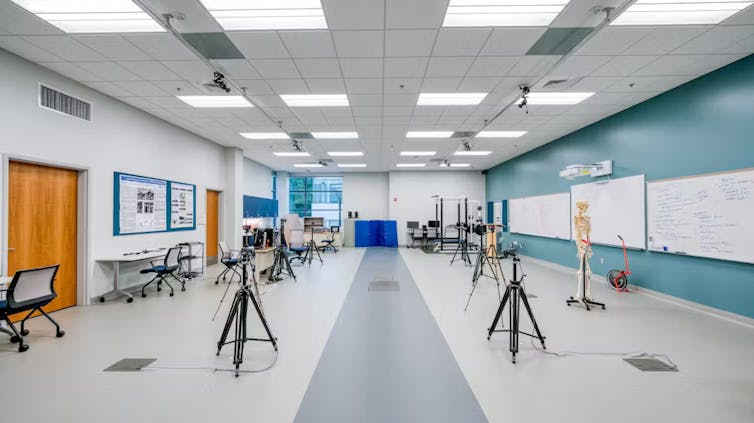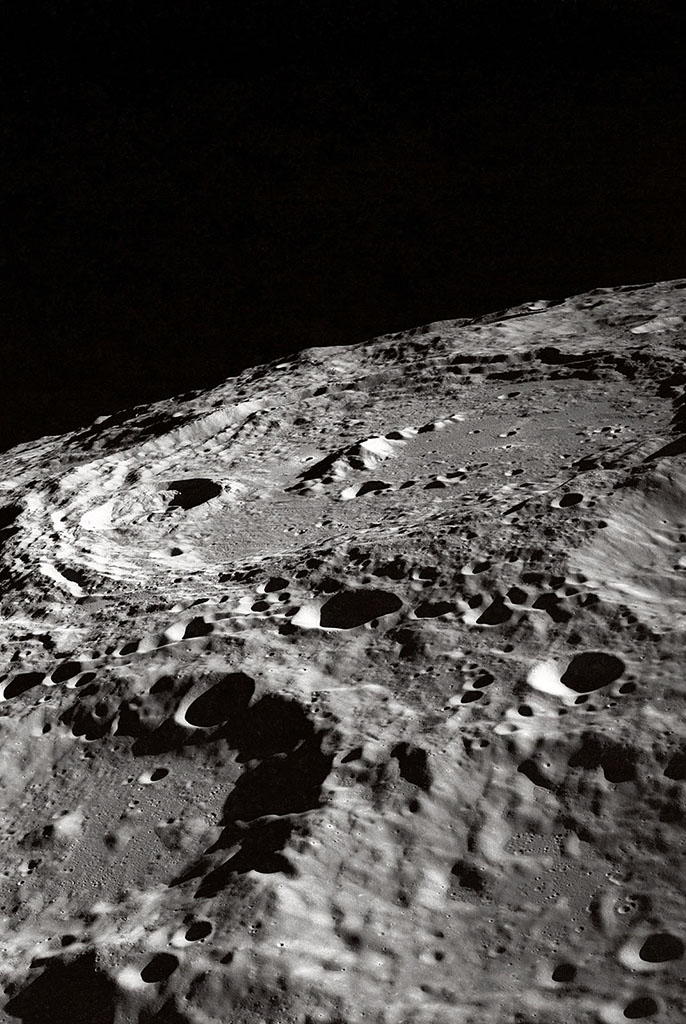“Faster, mommy, faster!” Allison’s toddler squealed as she ran down the hill by her house with her jogging stroller. As a longtime runner and running biomechanics researcher, she found herself in the same situation as many parents of young children: squeezing in runs between work meetings, meal prep and nap schedules.
A running stroller offered flexibility – but something felt off. That question about her running form soon became the starting point for a shared research effort.
The two of us – Allison Altman Singles and Joe Mahoney – are professors and biomechanics researchers interested in how running form affects injury risk. Together, we founded the Biomechanics and Gait Evaluation Laboratory, or BaGEL, at Penn State Berks.

The BaGEL Lab’s runway and camera system helps researchers study the biomechanics of stroller running.
RDB Imaging LLC
Biomechanics is the science of how the body moves − blending biology and physics to understand how muscles, bones and joints work together like a machine. Allison’s experience with stroller running raised questions we couldn’t find clear answers to in the research – so we brought these questions into the lab. For the past four years, we’ve been studying how running with a stroller affects gait and the risk of overuse injuries.
How stroller running affects the runner
Most stroller-related regulations focus on the child’s safety and comfort. But what about the adult doing the pushing? Overuse injuries such as shin splints, stress fractures and runner’s knee are common in all runners. Subtle changes in running mechanics, such as those that occur when adapting to a heavy stroller, can lead to these injuries.
We found two earlier studies that hinted at the biomechanical effects of stroller running. One showed that pushing a stroller led the runner to lean forward more and change their hip posture. Another showed the runner slowed down and took longer strides when pushing a stroller. But overall, researchers and regulators have largely overlooked the runner’s experience.
Example of a pilot data collection run in our lab.
We decided to find out more. We invited healthy adult runners into our lab. Each participant ran with and without a stroller. We recorded their motion using high-speed motion capture – the same technology that video games and Hollywood movies use. Each runner completed trials over a force plate, which recorded the impact of every stride. After data collection, we began analyzing the results.
What we found
Our results suggested that running with a stroller presents a trade-off. It increases some risk factors for overuse injuries, while reducing others.
In general, the stroller runners had less impact per step – this measurement refers to the force of the collision between the foot and the ground. Runners experienced a 16% lower impact…


